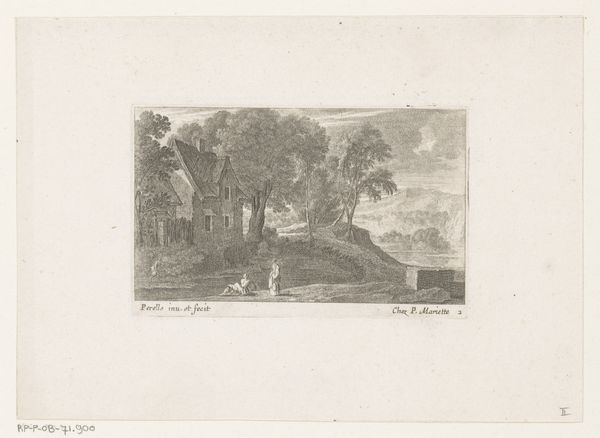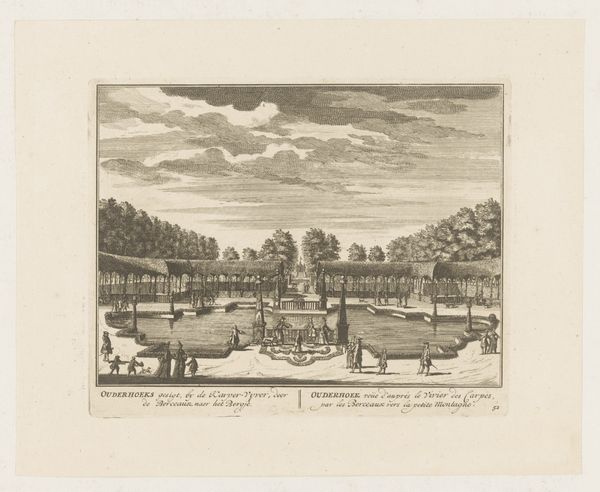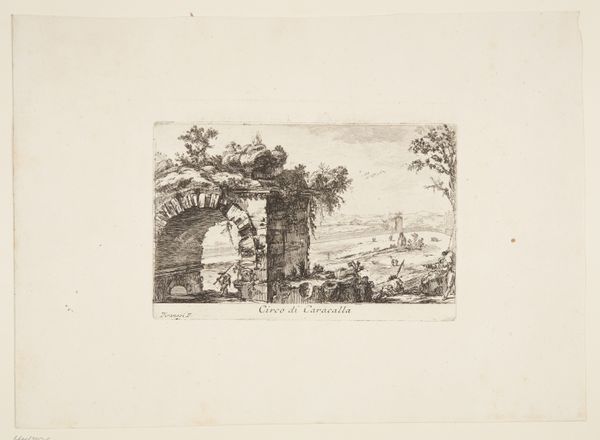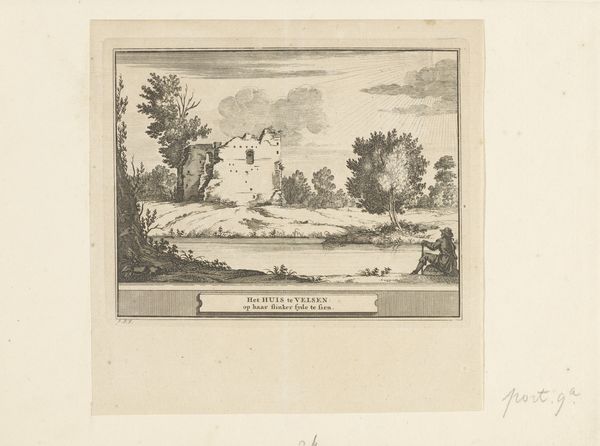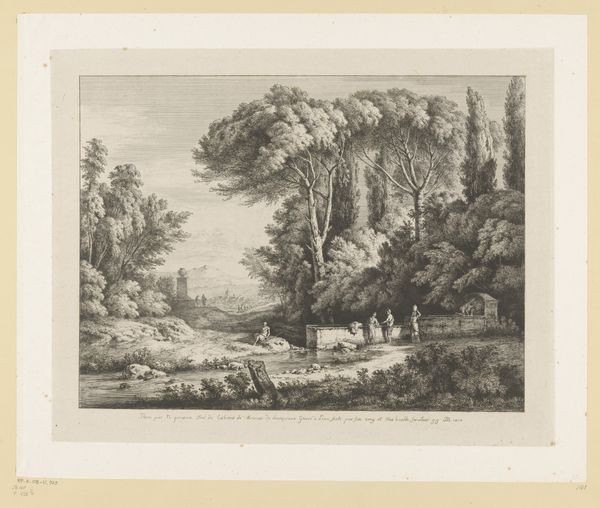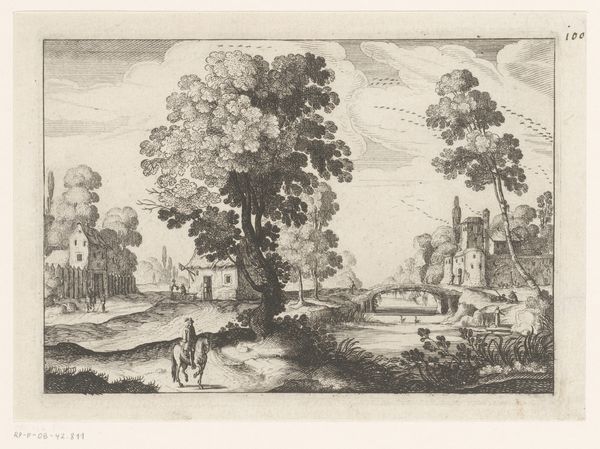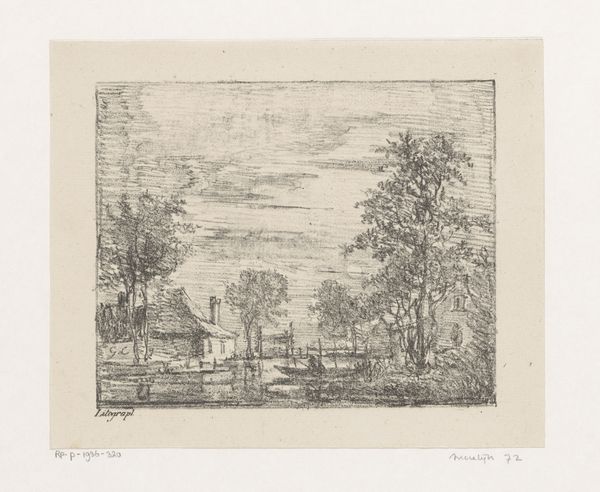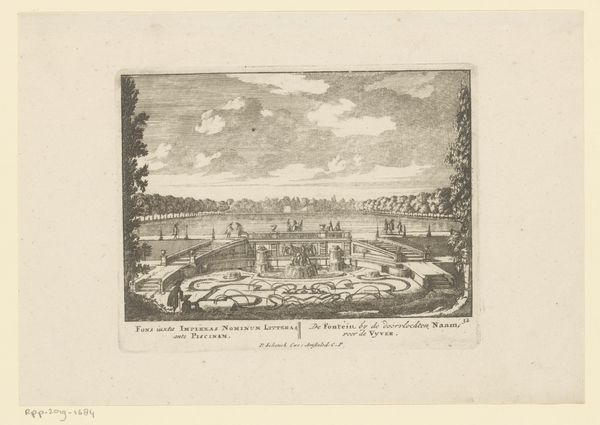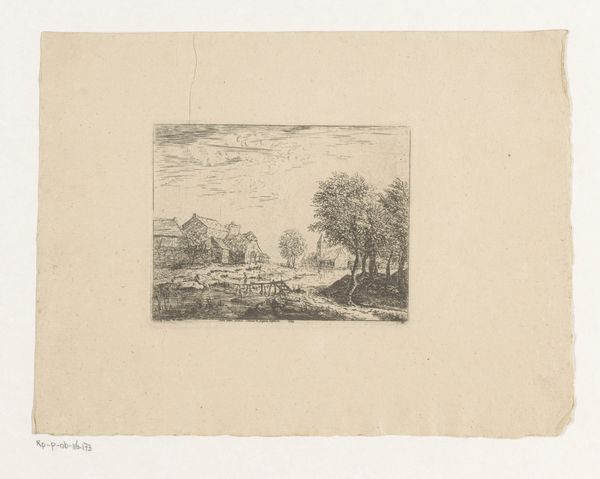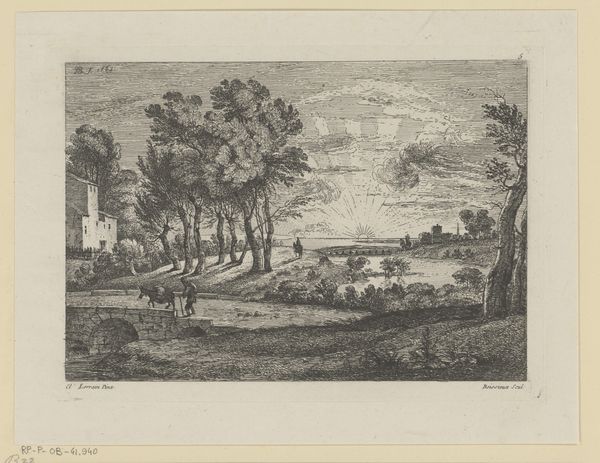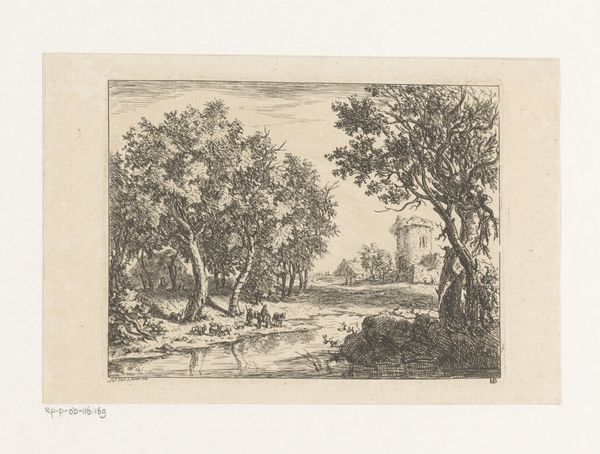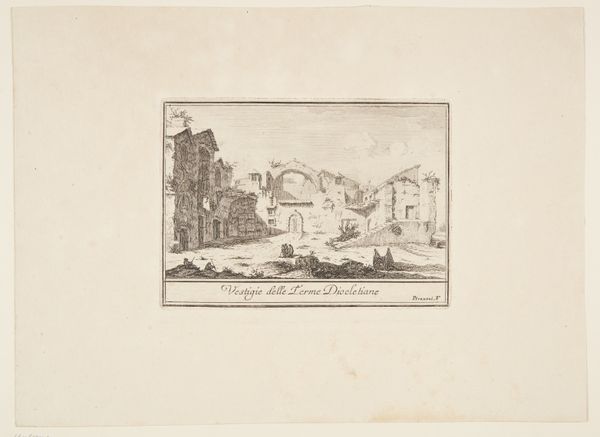
etching
#
etching
#
asian-art
#
landscape
#
river
#
figuration
Dimensions: height 250 mm, width 320 mm
Copyright: Rijks Museum: Open Domain
Curator: This is "Rivierovergang, Bali" or "River Crossing, Bali" by Wijnand Otto Jan Nieuwenkamp, created between 1907 and 1909. It’s rendered with ink in an etching technique, producing a rather captivating scene. Editor: There's a serene quality to the light. It almost feels like looking at a faded memory. I'm drawn to the groups of figures; they seem to move about their day undisturbed, carrying objects. What’s the artist’s process that results in this unique vision? Curator: Well, consider Nieuwenkamp himself, a fascinating character, traveling by boat throughout the Indonesian archipelago. The etching technique – using acid to bite into the metal plate – suggests a deliberate and time-intensive act. This wasn't a quick sketch but a considered construction born out of direct observation. Editor: Absolutely, that prolonged creation explains the visual harmony and peaceful narrative. This river seems like an artery, connecting daily life, rendered with such intricate symbolism. Note how small each human is and how significant is their travel on the river, like some collective subconscious dream. Curator: Symbolism, indeed, flows deeply here. River crossings represent transitions, journeys from one state to another. You might even view it through the lens of colonial engagement, where bodies were moved and allocated for material production, and where an aesthetic lens mediates the cultural setting. The indigenous people, Bali's river… Editor: It speaks to the broader narrative, for me: The connection between humanity and nature. Look at how the trees on either side mimic human forms – the very spiritual balance. And the figures are replicated by similar tree clusters. There is an intense psychological exchange, not merely colonial exploitation, happening right there! Curator: An intriguing idea. I see how the artist is employing light and shadows to amplify his intended meaning. As Nieuwenkamp manipulates the materials of his etching—the ink, the paper, the printing process—to capture the light of Bali and a people’s labour, we also receive symbols of spiritual balance as his final offering. Editor: This has left me considering not just what the piece shows but also how these repeated images operate psychologically. What persists when forms repeat? Curator: It makes me ponder the nature of looking itself, of etching something—be it an image or a moment in time—into something lasting through manual labor. Editor: A potent blend indeed, echoing through these symbols on paper.
Comments
No comments
Be the first to comment and join the conversation on the ultimate creative platform.
